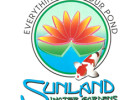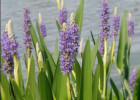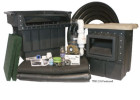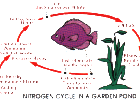Planting and care instructions for Aquatic plants

Planting and care instructions
for Aquatic plants
We recommend planting all plants in pots rather than directly in the bottom of the pond. This aids in the maintenance by making the containers retrievable, thus making plant care and pond cleaning easier. All plants do best in at least 5 hours of direct sunlight each day for maximum growth
Fertilize free through out the growing season.
Planting Tropical Water lilies
Day and night blooming tropical water lilies should be planted in pots at least 12 inches in diameter. Fill the pot half full with soil made up of clay and decomposed granite. Add 1 or 2 Laguna fertilizer sticks for best growth all season. Continue adding soil until 3 inches from top of pot. Add tropical water lily bulb pushed into the soil til it is just peeking out from the soil. Make sure it is not completely buried and the crown is not covered. Covering in surface of the pot with gravel is also an option if you have Koi that like to “root” around in the plants. The plant can be lowered carefully into pond. Ideally 12″ of water to start then lowing it deeper as in grows larger. It can thrive in water depths of up to 5 feet as the plant matures. Tropical water lilies can not tolerate cold temperature and should not be planted until the water reaches at least 68 degrees. Planting to early will cause it to go back into dormancy ans restrict the potential growth. Tropicals bloom from late spring until frost frost. In the winter months tropicals will loose all of their leaves and be completely dormant. These beautiful plants are considered perennial in zones 7-10.
Hardy water lilies
Hardy water lilies are planted pretty much the same as tropicals. Hardys grow horizontally across the container so an extra wide pot is recommended. Plant the “rhizome” at one extreme edge at a slight 45 degree angle with the crown pointing up and exposed. Remember to fertilize for best performance. Lower into 12″ of water to start then lower to 24″ as lily grows larger. Hardies should be planted in early spring. They bloom from May thru September depending on the weather. In the cold winter months you will notice the leaves getting smaller but they will do quite well in the cold even in cold climates.
Bog plants
Bog plants are considered plants with “wet feet” or marginal aquatic plants. They should be planted in individual pots 1-5 gallons in capacity. Plant as you would the lilies including the fertilizer stakes. Bog plants are to be in water no deeper than 3″ above the top of the pot. Most bogs well make it through cold months especially in zones 5-10 but may die back and be very brown and awful looking. But just cut down all of the dead brown grow to the pot line and wait for it to come back the next spring.
Floating plants
These plants of course require no planting. Simply place them in the water
and they will get there nutrietion through their roots floating around in the pond or water garden. Floating plant require warm tempetures and can not tolerate the frost. These are considered annuals in all but zones 9-10.
Oxygenating plants-underwater grasses
All ponds should have underwater oxygenating plants to aid in maintaining clean pear water. These plants help prevent algae growth and provide oxygen.These plant are planted in the same manner as the other plants in one gallon pots. These can be submerged to the bottom of your pond. They do best in water depths of at least 12″.
For more aquatic plant information please call
Sunland Water Gardens @ (818) 353-5131

How to plant Hardy water lilies, How to plant water lilies
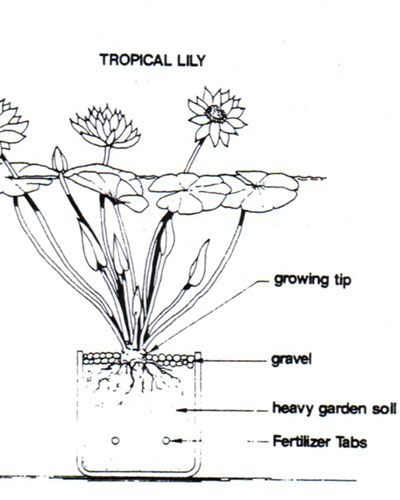
tropical water lily care, how to plant a tropical water lily
Article: Planting and care instructions for Aquatic plants
Article Source: Sunland Water Gardens
Author: Jacklyn Rodman


